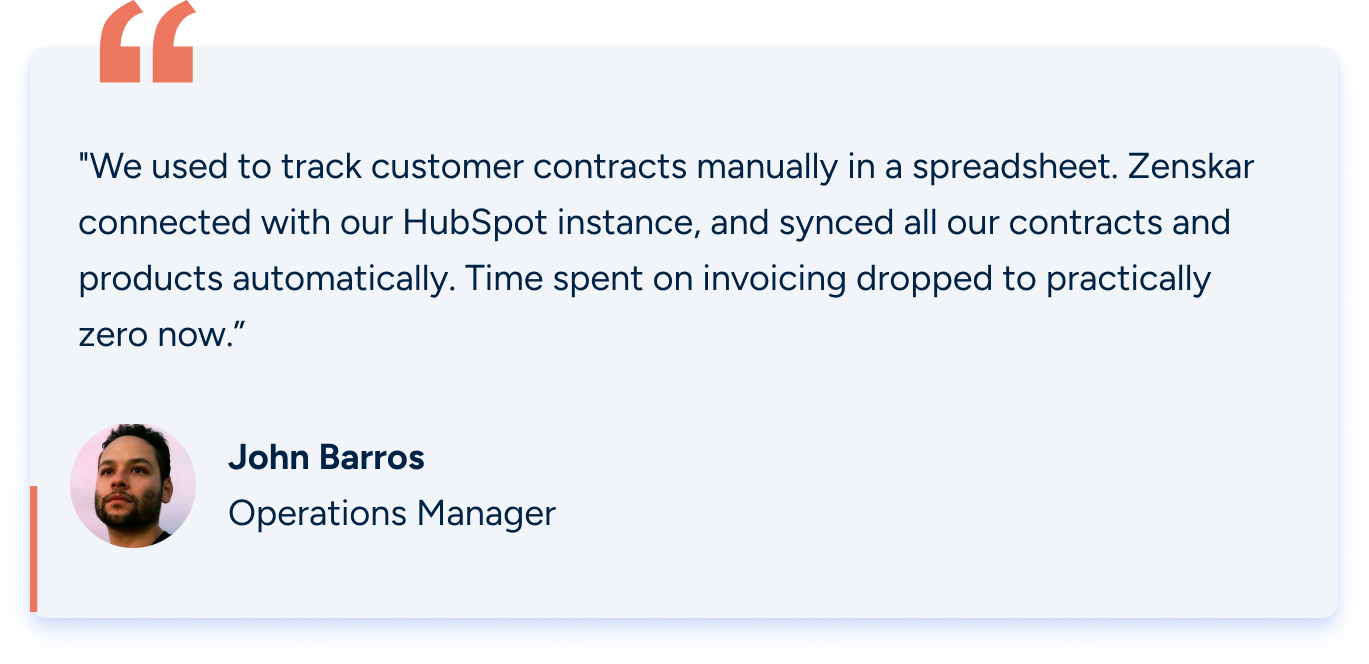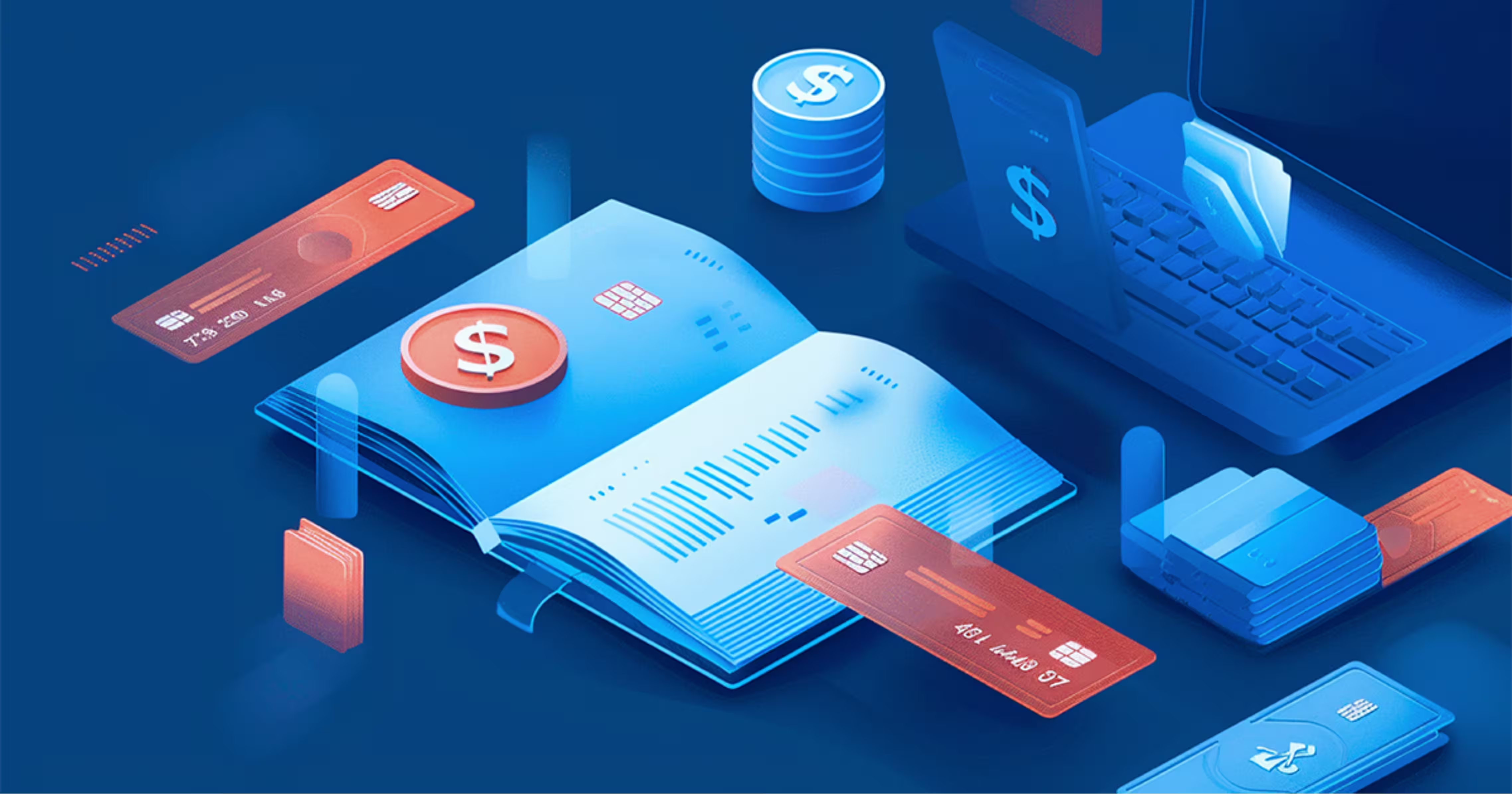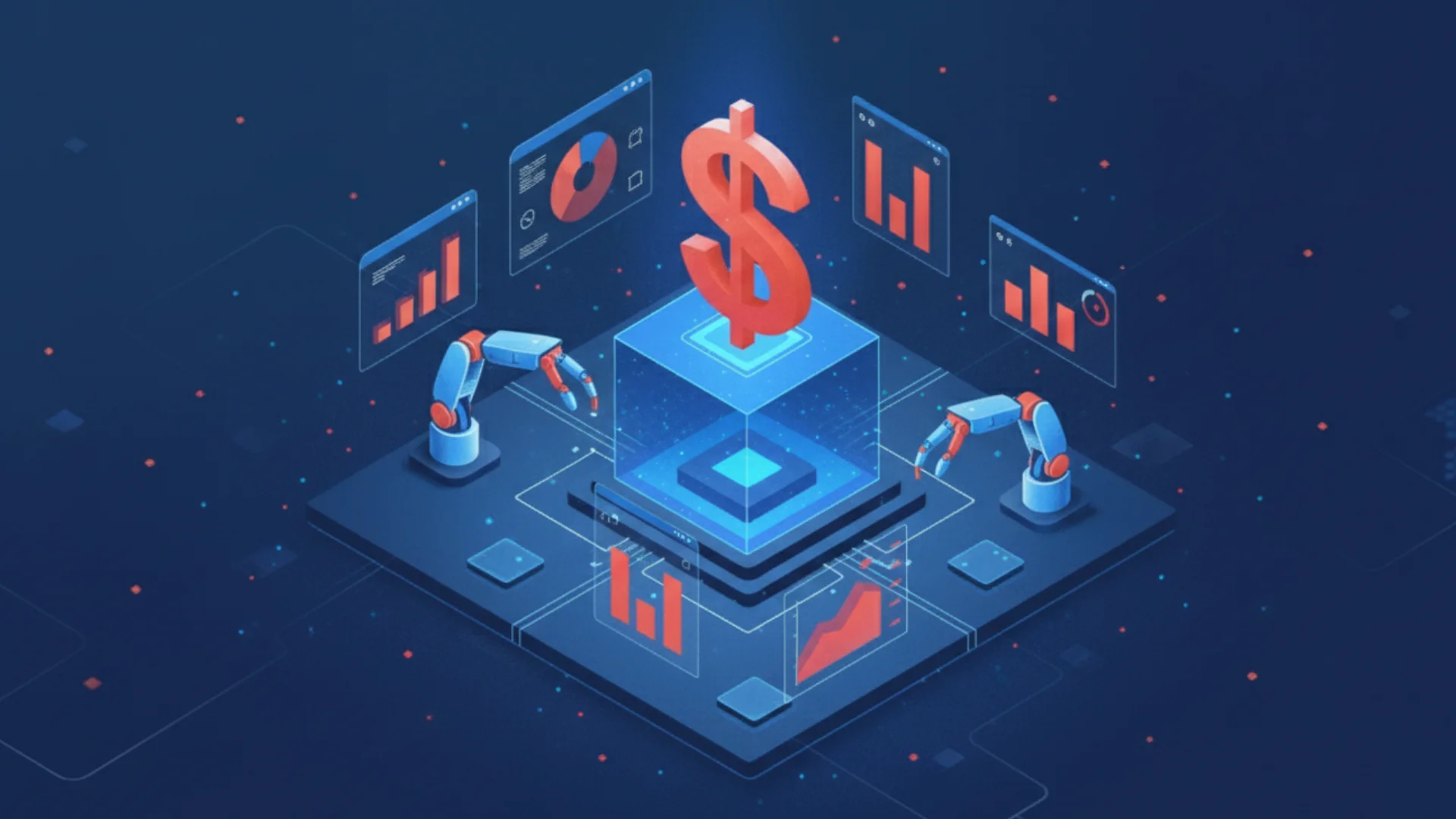How to Identify and Avoid Revenue Leakage in 2025
%20be%20truly%20invisible_.webp)
According to a 2025 MGI Research, revenue leakage silently eats up to 1-5% of your EBITDA every year. That’s anywhere from $500,000 to $5 million slipping through cracks in your billing systems, outdated contracts, and manual processes.
Most finance teams don’t even realize it’s happening. Missed renewals, pricing errors, unbilled usage, it all adds up quietly until your margins tighten and cash flow dries up.
Fixing revenue leakage isn’t optional, it’s revenue protection. This guide will show you how to identify, avoid, and fix revenue leakage for your business.
What is revenue leakage and how does it differ from revenue loss?
Revenue leakage is more dangerous than traditional revenue loss because it’s hidden. It happens inside your existing revenue streams, not outside them. And unless you’re actively monitoring your billing, contracts, and revenue recognition, you won’t see the leaks, until they’ve already cost you millions.
How do different industries experience revenue leakage?
1. SaaS companies
In SaaS businesses, revenue leakage usually hides inside subscription billing and usage tracking. Missed renewals, incorrect usage metering, or outdated usage based pricing in your billing systems are common culprits.
A customer upgrades their plan mid-cycle, but your system doesn’t capture the change, resulting in underbilling that no one spots for months. Multiply this across hundreds or thousands of accounts, and your ARR (annual recurring revenue) quietly erodes.
Key challenges
- Unbilled usage due to poor metering
- Missed subscription renewals
- Incorrect accounting for upgrades or downgrades
- Revenue misalignment due to manual RevRec processes
Fast-scaling SaaS companies often outgrow their early billing systems, leading to leaks that only surface during audits or due diligence.
2. Telecom providers
For telecom companies, revenue leakage often occurs in service activation and billing synchronization. A customer may receive a service (like data usage or international calling) without proper billing setup, a mismatch between service provisioning and invoicing systems. Discounts applied incorrectly or failing to deactivate services after cancellation are also common pitfalls.
Where telecom leaks revenue
- Delayed or incorrect billing after service activation
- Failure to charge for premium or add-on services
- Missed charges from manual adjustments
- Incorrect contract rate application in legacy billing systems
Even small billing errors in telecom can quietly drain millions in lost revenue, especially across large customer bases, without raising obvious red flags.
3. Healthcare providers
In healthcare, revenue leakage often happens when insurance claims are rejected due to coding mistakes or missing paperwork. Sometimes, hospitals undercharge on purpose to avoid triggering audits, losing money just to avoid compliance risks. These issues add up fast, quietly draining revenue that should have been collected.
Typical leakage sources in healthcare
- Incorrect Current Procedural Terminology (CPT) or International Classification of Diseases (ICD) coding can lead to claim rejections.
- Underbilling to avoid compliance scrutiny
- Failure to track follow-ups on denied claims
- Delayed billing due to documentation gaps
Hospitals and clinics often accept leakage as a cost of doing business. But in reality, it’s preventable with better process controls and automation.
What symptoms indicate that a business is experiencing revenue leakage?
.png)
1. Declining margins without a clear cause
If your profit margins are shrinking despite steady sales, you’re likely leaking revenue somewhere internally. This often points to billing errors, missed renewals, or incorrect pricing slipping past your checks.
2. Frequent billing disputes or credit notes
Are your customers constantly flagging incorrect invoices? If your collections team spends too much time issuing credit notes or correcting invoices, you’re not just creating operational headaches, you’re leaking earned revenue.
3. Slower cash flow despite healthy sales
A growing sales pipeline but tightening cash flow signals money isn’t being collected efficiently. Often, revenue leakage is the hidden reason behind delayed payments or unresolved receivables.
4. Growing unbilled revenue balances
When your finance reports show an increase in unbilled revenue i.e. income earned but not yet invoiced, that’s a flashing red light. It suggests poor billing processes or system mismatches.
5. Increasing audit adjustments
If your auditors regularly find revenue recognition mistakes, underbilling, or missing invoices, you’re seeing revenue leakage symptoms post-fact, often when the financial year closes. By the time auditors catch these mistakes at year-end, you've already missed opportunities to collect that money, and customers may dispute charges for old services.
What are the key causes of revenue leakage in businesses, and how can they be fixed?
1. Billing and pricing issues
How billing discrepancies lead to revenue leakage
Incorrect invoices, missed line items, wrong tax rates, these small errors often go unnoticed in manual billing setups. But over time, they compound into substantial lost revenue.
How pricing errors drain revenue
Outdated price lists or inconsistent discounting policies directly erode margins. Finance teams often discover customers paying legacy rates long after contract renewals.
Preventing pricing discrepancies
- Implement centralized price books.
- Automate approval workflows for custom pricing.
- Regularly audit product and service catalogs.
Fixing billing discrepancies
- Tighten order-to-cash integrations across sales, billing, and finance.
- Use automated invoice validation tools.
- Introduce pre-invoice review checkpoints for high-value contracts.
How automation Helps
Use an automated SaaS billing software that can flag outliers, like zero-dollar invoices or unusual discounts, before they go out.
2. Contract-related leakage
What is contract leakage?
Revenue tied up in poorly managed contracts, missed renewals, unbilled clauses, or non-compliant discounts, is contract leakage.
In SaaS, it’s common for companies to:
- Forget renewal escalators.
- Fail to enforce contracted usage limits.
- Allow non-standard terms without finance sign-off.
Strategies to prevent contract leakage
- Centralize contracts in a Contract Lifecycle Management (CLM) system.
- Build finance-led checkpoints into sales deal approvals.
- Automate renewal and escalation reminders.
Long-term impact of contract non-compliance
Unchecked contract leakage not only loses revenue, it erodes negotiation leverage, weakens renewal cycles, and complicates audits.
3. Invoice-related issues
What is invoice leakage?
Missed invoices, incorrect payment terms, or sending invoices late all lead to delayed or lost collections.
Solution
- Automate invoice generation immediately after service delivery.
- Use real-time invoice status tracking.
- Enforce strict payment terms monitoring.
4. Subscription-related problems
What is subscription leakage?
In SaaS, subscription leakage happens when renewals lapse unnoticed or customers downgrade silently without financial oversight.
Prevent it by
- Automating renewal notifications.
- Monitoring subscription changes in real-time.
- Syncing billing directly with subscription management tools.
5. Usage-based billing errors
How usage billing causes revenue leakage
If you charge based on usage, API calls, transactions, storage, you risk underbilling when consumption isn’t tracked accurately. For example, data mismatches between your product usage logs and billing engine mean services rendered aren’t billed accurately.
Fix it by
- Implement real-time usage tracking systems that automatically sync product logs with billing engines.
6. Revenue recognition mistakes
How incorrect revenue recognition leaks revenue
- Recognizing revenue before delivery (premature) or after (delayed) causes compliance risks and misstates profitability.
- Deferred revenue and unearned revenue often get misclassified without automated tracking.
Financial risks
Mismatched revenue recognition isn’t just a reporting error, it impacts compliance (ASC 606/IFRS 15), investor trust, and can trigger restatements.
Fix it by
- Automating RevRec tied to billing milestones.
- Ensuring billing and revenue recognition tools are decoupled but integrated.
What is a step-by-step approach for conducting a revenue leakage audit? [checklist]
1. Map your end-to-end revenue process
Document how revenue flows across quoting, contracting, billing, invoicing, collections, and reporting. This shows where leakage can occur.
2. Examine high-risk departments and processes first
- Sales & Account Management: Contract terms, discounts, renewals.
- Billing Operations: Invoicing accuracy, subscription management, usage tracking.
- Finance & Revenue Teams: Revenue recognition, collections, reporting gaps.
- Focus where contract complexity and billing volumes are highest.
3. Collect and analyze historical billing and collections data
Identify mismatches between contracted amounts, billed amounts, and cash collected over the last 12-24 months.
4. Review contracts for pricing and compliance issues
Audit deal terms, rate cards, and renewal clauses. Identify inconsistencies or non-standard deals.
5. Calculate total leakage and quantify impact
Measure the gap between contracted revenue vs. revenue billed and collected. This quantifies revenue leakage as a dollar figure to prioritize fixes.
6. Prioritize fixes based on financial impact
Address issues causing the highest revenue loss first, whether billing errors, missing invoices, or contract non-compliance.
7. Set up real-time monitoring and reporting
Use solutions like Zenskar to track revenue-critical metrics in real-time:
- SaaS metrics (ARR, MRR)
- Billing vs. revenue reporting
- Usage trends and overages
- Churn and renewal patterns
With Zenskar’s analytics module, unify your financial and usage data to spot leakages early and make decisions faster.
Avoid revenue leakage with Zenskar
Most revenue leakage hides in manual billing errors, missed invoices, and delayed revenue recognition. Zenskar eliminates these problems by automating your entire billing process, revenue recognition, and collections, on a single platform.
Solutions like Zenskar eliminate manual blind spots:
- Monitor billing gaps as they happen.
- Get alerted to unbilled usage or delayed renewals.
- Visualize revenue streams in one place, usage data, billing, financial reporting, and churn analytics, making leakage visible, actionable, and preventable.
With Zenskar, finance teams move from reactive fire-fighting to proactive revenue protection.
Yembo, an AI-powered SaaS company, used to manage billing in spreadsheets and lost revenue due to missed overages and manual errors. After Yembo switched to Zenskar, it experienced the following results:
- 50% of revenue was collected a month earlier.
- 90% of the finance team’s time was saved.
- Revenue leakage dropped to zero.

Zenskar now handles their usage tracking, invoicing, and revenue recognition automatically. No spreadsheets, no manual checks, no missed revenue.
Every day without Zenskar is lost revenue. Take a quick product tour or book a custom demo to discover how we're helping modern finance teams avoid revenue leakages.
Frequently asked questions
Revenue leakage is money a business earned but didn’t collect, often due to internal errors or billing issues. It differs from revenue loss, which is income never earned because of lost sales or market factors.
SaaS, telecom, and healthcare are highly vulnerable due to complex billing systems, frequent contract changes, and manual processes that create more opportunities for errors and missed revenues.
Typical causes include billing discrepancies, outdated pricing, missed contract clauses, delayed or missing invoices, manual errors, and poor tracking of usage-based services.
Automation with Zenskar helps prevent revenue leakage by automating billing, usage tracking, and revenue recognition, eliminating manual errors and missed charges.
Map your revenue flow, examine contracts and invoices, compare expected to actual collections, and establish ongoing monitoring to catch leaks early and prioritize fixes.



















.webp)



